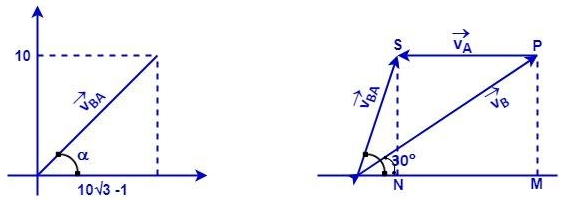
Two objects A and B are moving along the directions as shown in the figure. Find the magnitude and direction of the relative velocity of B w.r.t. A.


Answer
472.8k+ views
Hint Relative velocity of B w.r.t. A is given by:
Magnitude of this relative velocity is
Direction of this relative velocity is given by the angle
Where
Complete step by step solution
Relative velocity of B w.r.t. A is
Note
Alternate method:
Velocity of B w.r.t. A:

From the figure;
Magnitude of this relative velocity is
Direction of this relative velocity is given by the angle
Where
Complete step by step solution
Relative velocity of B w.r.t. A is
Note
Alternate method:
Velocity of B w.r.t. A:

From the figure;
Recently Updated Pages
Master Class 9 General Knowledge: Engaging Questions & Answers for Success

Master Class 9 English: Engaging Questions & Answers for Success

Master Class 9 Science: Engaging Questions & Answers for Success

Master Class 9 Social Science: Engaging Questions & Answers for Success

Master Class 9 Maths: Engaging Questions & Answers for Success

Class 9 Question and Answer - Your Ultimate Solutions Guide

Trending doubts
State and prove Bernoullis theorem class 11 physics CBSE

What are Quantum numbers Explain the quantum number class 11 chemistry CBSE

Who built the Grand Trunk Road AChandragupta Maurya class 11 social science CBSE

1 ton equals to A 100 kg B 1000 kg C 10 kg D 10000 class 11 physics CBSE

State the laws of reflection of light

One Metric ton is equal to kg A 10000 B 1000 C 100 class 11 physics CBSE




